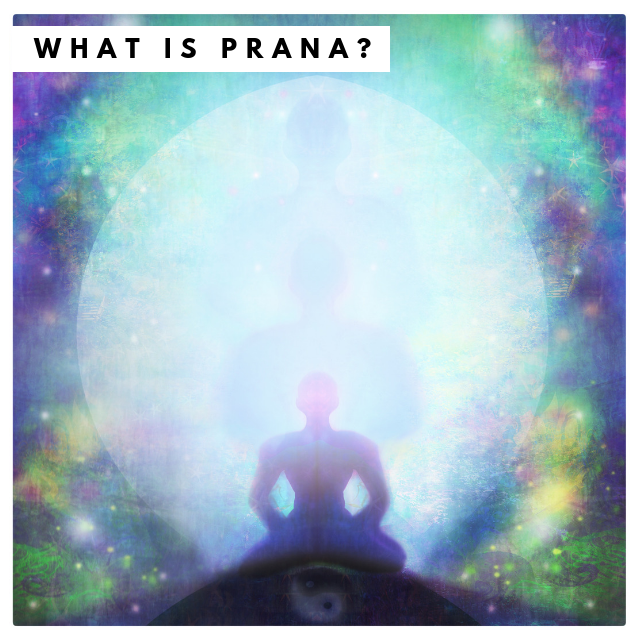What is Prana?
“Prana is the driving power of the world, and can be seen in every manifestation of life.” – Swami Vivekananda
The whole of creation is formed by Prana – the universal energy from which all energies stem – and Chitta, universal consciousness. Life as we know it arises from the union between Prana and Chitta.
Prana, is the life force, the very vital energy which supports every level of creation. All manifest and unmanifest energy in the cosmos, in sentient as well as insentient beings are expressions of prana. The gravity in planets, the heat from the sun, the flight of birds, the roaring of lions, the speech of humans, the movement of vehicles; these are all manifestations of prana. The Sanskrit definition of prana is a force in constant motion.
Prana drives all actions and all transformation in creation. In the human body, any movement, no matter how subtle is pushed by prana. Even thoughts – the conscious and subconscious – are driven by prana.
Prana is known as Qi in Qi Gong, Chi in Tai Chi and Ki in Reiki. All eastern practices work with prana.
“Every cell in our body has the capacity to hold infinity. Let us tap the full potential that nature has bestowed on us, the potential to hold infinity in every cell of the body. For that, we must practice meditation regularly. Then our physiology undergoes a change and every cell in the body is filled with prana – life force. As the level of prana in the body rises, we bubble with joy.” – Sri Sri Ravi Shankar.
Prana and Pranayama
Yogic philosophy describes the body as a combination of prana shakti and chitta shakti. At the human level, prana shakti is vital energy and chitta shakti is mental energy. The very aim of Hatha yoga is to balance both these elements, which eventually results in enlightenment.
All beings are born with a certain quantity of prana. The level of prana we are born with is maintained, increased or decreased depending on our breathing, thinking, nutrition, lifestyle and activity. Usually, we obtain prana from eating and breathing.
Sleeping, digestion, exercising; every activity consumes prana. But the greatest spender of prana is the mind. If the brain is not supplied with enough prana, it becomes restless and irritable. Therefore, increasing prana is of foremost importance for overall health and wellness.
Prana is not received exclusively from external sources; it can also be self-produced with certain practices. Our level of prana can be enhanced for purposes such as healing, increased vitality or to expand our consciousness. This is the aim of Pranayama and Prana Vidya, practices designed specifically to increase prana.
“A genuine smile distributes the cosmic current, prana, to every cell in the body. The happy man is less subject to disease, for happiness actually attracts into the body a greater supply of the Universal life energy.” – Paramahansa Yogananda
Prana and the Body
Our entire being is formed by five dimensions of existence, known as the Koshas – the five sheaths. These are known as:
Annamaya kosha or the human body,
Pranamaya kosha or the human energy field,
Manomaya kosha or the conscious mind,
Vijanamaya kosha or the subconscious and unconscious mind,
Anandamaya kosha or the body of spiritual bliss.
Pranamaya Kosha, the energy body which envelops the entire physical body is made entirely of prana, pure energy. The very existence of Pranamaya kosha, is what differentiates the living from the dead. We can continue to live without a heartbeat for almost six minutes, but the moment prana stops flowing we are clinically dead.
“As long as the vayu (prana) remains in the body, there is life. Death occurs when the vayu leaves the body, therefore, retain the vayu.” – The Hatha Yoga Pradipika (2:3)
Pranamaya Kosha is responsible for our vitality. Those with a strong vital body often display great prowess in life, becoming of great influence. Similarly, those who carry a weak Pranamaya Kosha, lack enough energy to accomplish much in life, often involved in subservient professional activities.
The Nadis
In the human body, there is a complex energy network composed of 72000 nadis – energy channels and seven main chakras – energy vortices located along the spine. Just like the veins and arteries transport blood, the nadis carry prana to every cell in the body. Ida, Pingala and Sushumna nadis, which flow up the spinal column from the base of the spine to the brain are the most important of the 72000. Ida and pingala flow on either side of the central nadi, sushumna.
Prana Shakti is distributed through pingala nadi, the channel through which vital energy flows up the spine. Pingala nadi mirrors Ida nadi, through which mental energy flows up the spine. Sushumna nadi is said to carry Kundalini Shakti – The Primal Energy and a form of Prana – up the spinal column and into the brain, which results in enlightenment. The awakening of Kundalini Shakti is the main aim of Kundalini Yoga.
The Five Vayus
In the human body, prana exists in five forms named: prana, apana, samana, udana and vyana. Each of these forms of prana occupies a certain location within the body and plays a specific role.
The seat of prana is the heart and its main function is respiration.
Apana lies between the abdomen and the anus, and its function is excretion.
Samana is located in the navel and its function is digestion.
Udana is located in the throat. Its function is swallowing, speech and self-expression.
Vyana is all-pervading, running through all the nadis. Its main function is circulation.
Prana and oxygen
It is often heard that pranayama increases the levels of oxygen in the body, which is then transferred into the brain. However, research has previously shown that pranayama does not increase oxygen levels but eliminates built up toxins and CO2, which gives the impression of increased oxygen.
“The practice of pranayama forms the core of spiritual awakening. To most people pranayama means control of breath for physical health, but it has been misinterpreted and wrongly explained. Prana is universal in nature. The individual prana is a microcosmic representative of the universal system and should not be mistaken for the air that we breathe.” – Swami Satyananda Saraswati
Increasing our prana through the practices of pranayama is an absolute requirement if we wish to live with vitality and create value to those around us. It is said that those who practice twenty-five minutes of pranayama a day will boost their immunity and bring significant changes to their life.


